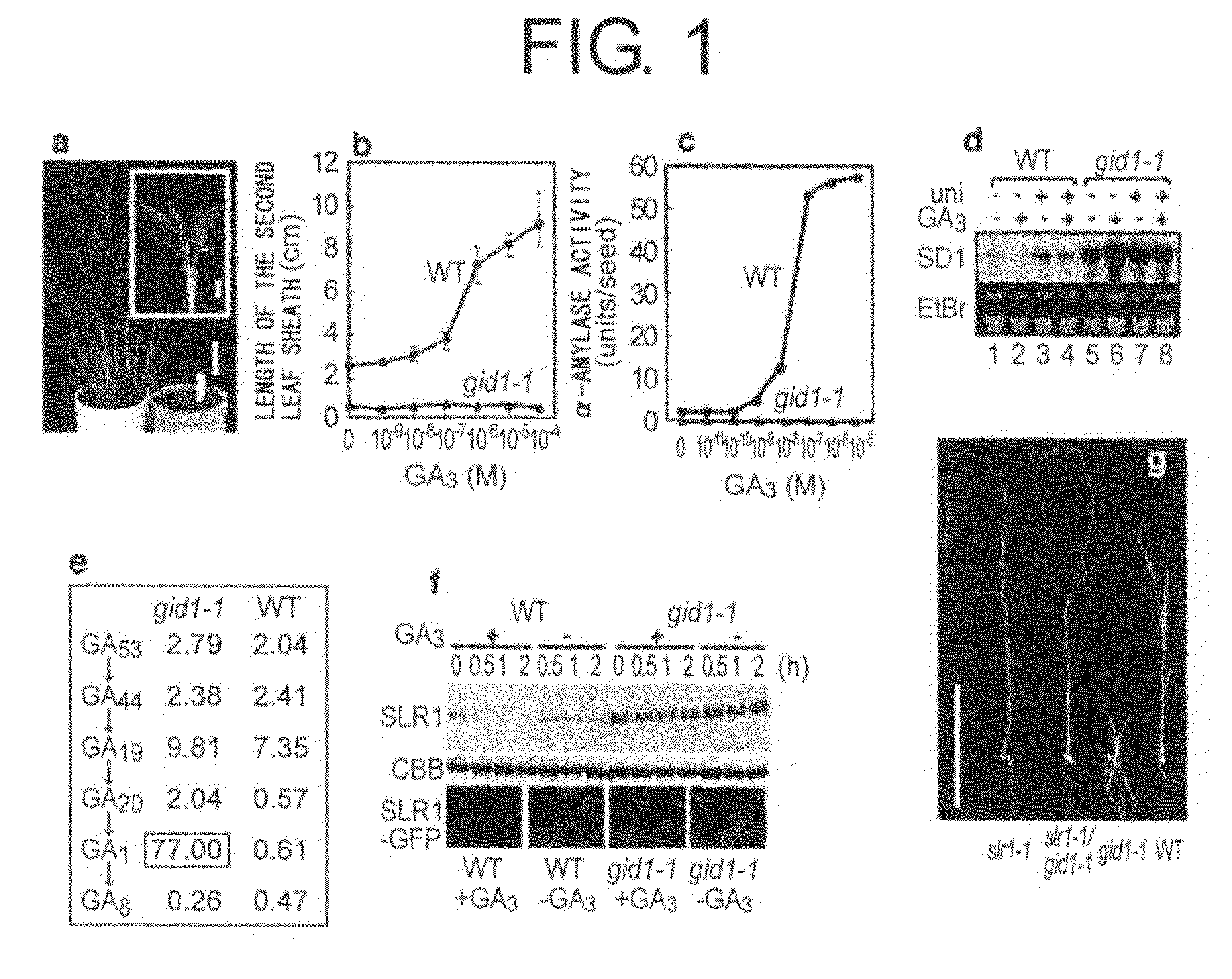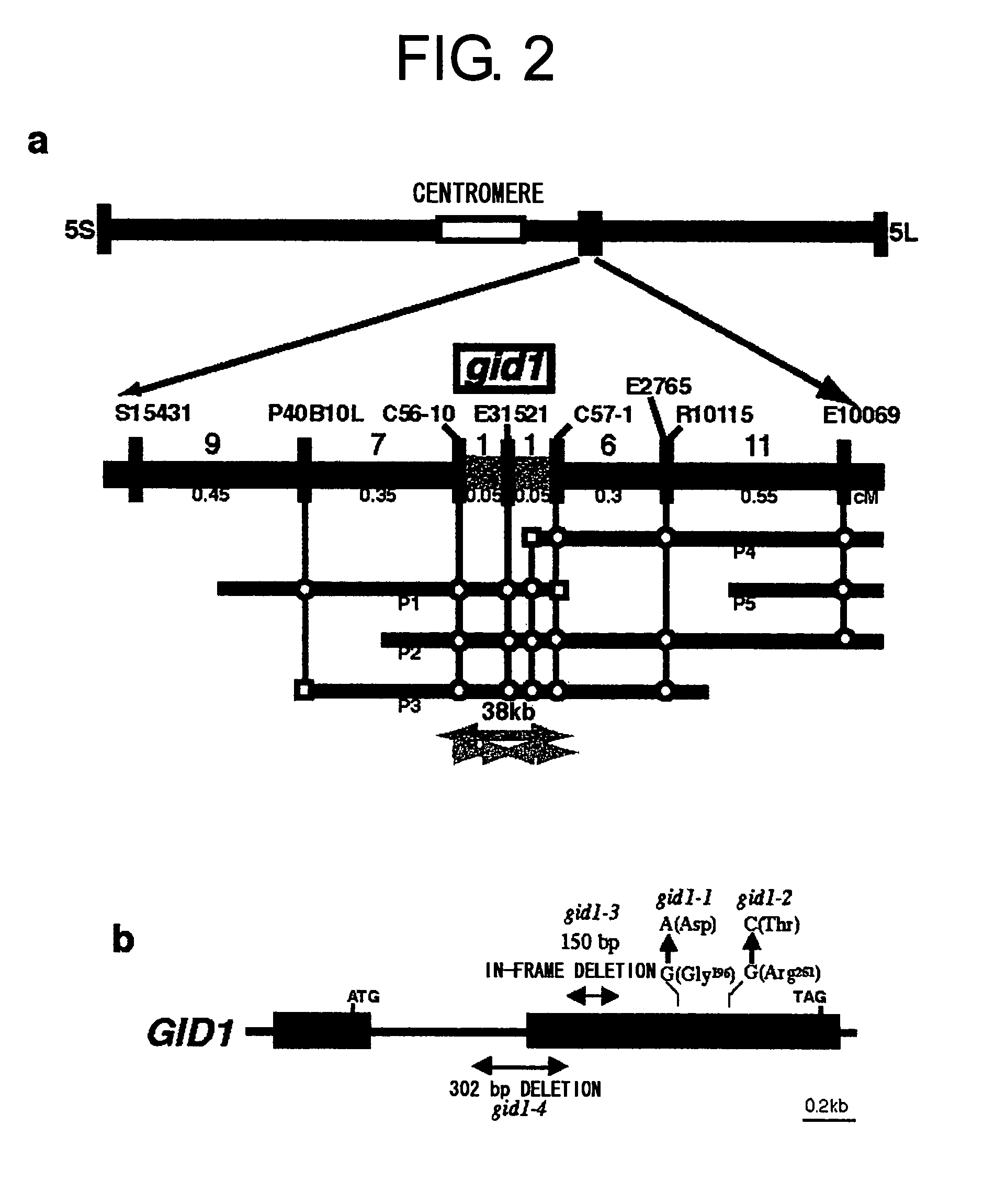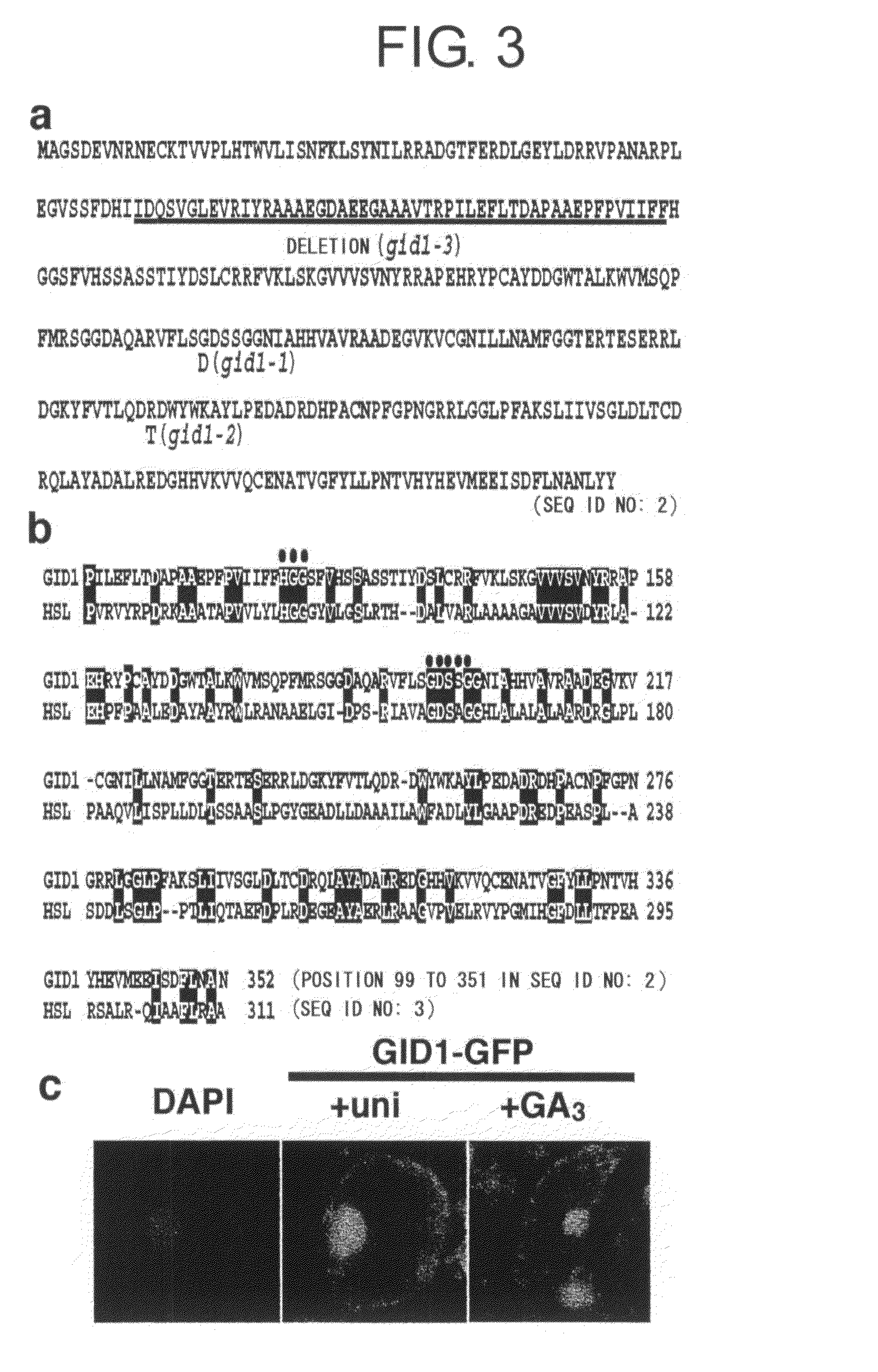Regulatory genes for plant differentiation and growth, and use of the same
a technology of plant differentiation and growth, applied in the direction of plant/algae/fungi/lichens ingredients, depipeptides, vector-based foreign material introduction, etc., can solve the problems of not knowing how plants perceive ga, how the ga signal is transmitted, and how, and achieves enhanced plant growth, high affinity, and increased gibberellin sensitivity
- Summary
- Abstract
- Description
- Claims
- Application Information
AI Technical Summary
Benefits of technology
Problems solved by technology
Method used
Image
Examples
example 1
Identification of Gibberellin-Insensitive Dwarf Mutants
[0094]To isolate genes involved in gibberellin perception, GA-insensitive dwarf mutants (gid) of rice were screened, and a few gid mutations were identified on different loci. gid1-, which is one of the mutants, exhibited severe dwarfism and enlarged leaf blades with dark green coloring, which are phenotypes typical of known GA-related mutants in rice (Sasaki, A. et al., Science 299, 1896-1898 (2003); Itoh, H et al., Proc. Natl. Acad. Sci. USA 98, 8909-8914 (2001); Sakamoto, T. et al., Plant Physiol. 134, 1642-1653 (2004)) (FIG. 1a). This mutation was recessively inherited, and since no fertile flowers developed, the mutant was maintained as a heterozygous plant. In the range of the tests carried out, this gid1 plant did not show any type of GA responsiveness. The elongation of the second leaf sheath was promoted with GA3 at 10−8 M or higher in the wild-type plant (WT), but not promoted at all in gid1-1 (FIG. 1b). Furthermore, α...
example 2
Cloning of Gibberellin Receptor Genes
[0096]The GID1 gene was isolated by positional cloning and the mutation sites in the four types of mutant alleles were determined to elucidate the molecular functions of GID1 (FIG. 2). The predicted GID gene is composed of one intron and two exons and encoded a polypeptide of 354 amino acid residues (FIGS. 2b and 3a). The analysis of the full-length cDNA sequence for this gene confirmed that the predicted exon regions were correct and that this gene is actually transcribed. When a 6.7-kb PstI fragment covering the entire region of the GID gene was introduced into gid1-1, it was revealed that the phenotype returns to the normal phenotype.
[0097]The amino acid sequence of GID1 protein was analyzed, and it was revealed that GID1 includes consensus sequences of the hormone sensitive lipase (HSL) family (FIG. 3b). Indeed, GID has both the GXSXG and HGG motifs (dots in FIG. 3b) which are the most conserved motifs in the HSL family (Osterlund, T. et al.,...
example 3
Molecular Analyses of Gibberellin Receptors
[0098]SLR1 degradation by GA does not occur in gid1 (FIG. 1f). Thus, it was postulated that, like GID2, GID1 is involved in the degradation of SLR1, or that GID1 functions upstream of SLR1 in GA signaling. A precise comparison of phenotypes between gid1 and other GA-related mutants revealed that the gid1 phenotype was more similar to those of severe alleles of GA-deficient mutants, such as cps (Sakamoto, T. et al., Plant Physiol. 134, 1642-1653 (2004)) and kao (Sakamoto, T. et al., Plant Physiol. 134, 1642-1653 (2004)), than to GA-insensitive mutants, such as gid2 (Sasaki, A. et al., Science 299, 1896-1898 (2003)) and ΔDELLA-type dominant GA-insensitive dwarf mutants (Itoh, H. et al., Plant Cell 14, 57-70 (2002)). Based on this phenotypic characteristic of gid1, it was predicted that GID1 was involved in GA perception. To verify this possibility, the interactions between GID1 and radioisotope-labeled GA was directly examined using non-equil...
PUM
| Property | Measurement | Unit |
|---|---|---|
| pH | aaaaa | aaaaa |
| temperature | aaaaa | aaaaa |
| temperature | aaaaa | aaaaa |
Abstract
Description
Claims
Application Information
 Login to View More
Login to View More - R&D
- Intellectual Property
- Life Sciences
- Materials
- Tech Scout
- Unparalleled Data Quality
- Higher Quality Content
- 60% Fewer Hallucinations
Browse by: Latest US Patents, China's latest patents, Technical Efficacy Thesaurus, Application Domain, Technology Topic, Popular Technical Reports.
© 2025 PatSnap. All rights reserved.Legal|Privacy policy|Modern Slavery Act Transparency Statement|Sitemap|About US| Contact US: help@patsnap.com



